Invasive species: they’re everywhere. And you could be inadvertently spreading them while you’re outside having fun, working around the yard, or even doing your holiday shopping.
While attending the recent Upper Midwest Invasive Species Conference, I was struck at some of the strange ways invasive species get spread. Oftentimes, we have only our bad choices to blame – introducing new infestations and causing damage to native ecosystems, agriculture and human health in the process.
Some reasons invasive species spread are hopefully relegated to the past. But others are still spreading due to our decisions. Making slight alterations in behavior, you can make a huge difference for conservation.
Here are 10 of the unusual ways invasives can be spread. There are many more – leave your own additions in the comments.
-
Running Shoes
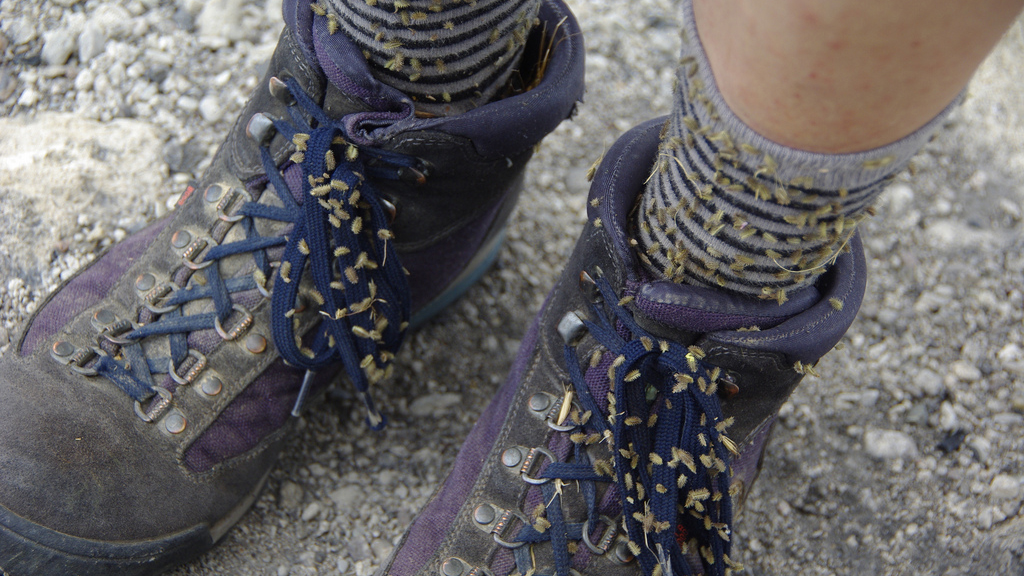
Shoes covered in weed seeds. Photo © Martin Lopatka / Flickr through a Creative Commons license You’re out running the hills after a hard day’s work, enjoying the fresh air and beautiful scenery. You’re in a zone, so you don’t notice when your shoe brushes against a patch of weeds. The next day, you fly to a meeting, running shoes in your luggage.
The next day you go for a run several states away, and dropping weed seeds along the way. The weeds have just spread far faster than your running pace.
Running shoes aren’t the only culprit. Fungal spores transported by caving equipment led to the spread of the deadly white-nose syndrome in bats. Bikes, ATV’s, boats, fishing equipment, clothing and other outdoor gear all are prime ways to transport weed seeds – infesting the places you love to recreate.
What You Can Do: Clean your outdoor gear after each outing, especially if you are moving it to a new area. The Play-Clean-Go campaign offers excellent tips to “stop invasives in your tracks.”
-
Aquariums and Backyard Ponds
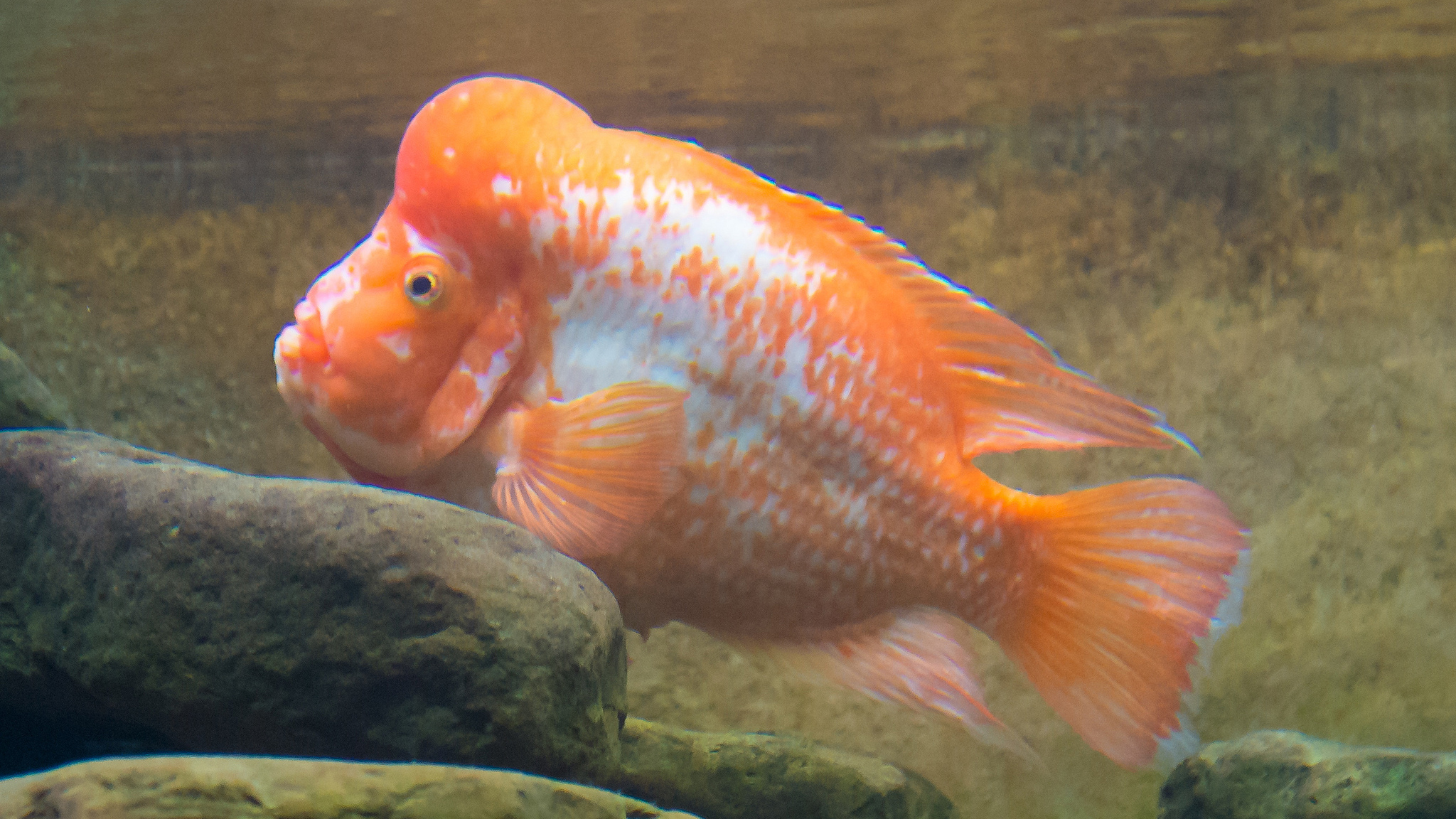
Amphilophus citrinellus (Midas cichlid). Photo © mark6mauno / Flickr through a Creative Commons license Your aquarium might seem like a contained system. But a long list of aquatic invaders originated from pets and plants kept in personal aquaria or backyard ponds.
Some people tire of tropical fish and think the best thing to do is set their pets free. This has led to non-native fish invasions in many places (the waters of Everglades National Park, for instance, are filled with exotic cichlids, walking catfish and others). Backyard ponds can flood into nearby streams or rivers, taking invasives with them. And when aquarium plants are cleaned up, the disposed plant material can contain seeds that spread.
What You Can Do: Don’t set pets (of any kind) free, ever. At best, it’s inhumane, and at worst you’ve introduced an invasive species. Dispose of aquatic plants in plastic bags. The Reduce Invasive Plant and Pet Escapes (RIPPLE) campaign offers many resources to responsibly take of care of your aquarium’s residents, without causing the next aquatic nuisance.
-
Firewood

Heating your home or cabin with wood when properly sourced (locally harvested or heat treated!) is an inexpensive and efficient way to get through the cold months. Infographic © Don’t Move Firewood This one may not be surprising due to the wildly successful Don’t Move Firewood campaign. But it bears repeating. Oftentimes, dead or dying trees are cut to sell for home firewood use or camping. These trees may be dying due to forest pests.
When you move firewood long distances, you can be transporting a host of nasties, including the emerald ash borer and Asian longhorned beetle. These pests exact a heavy toll on our forests. Don’t help move them into new areas.
What You Can Do: Buy it where you burn it. Support local firewood providers and don’t move wood around. The Don’t Move Firewood campaign can help – and they have really great graphics and videos to help spread the word on social media.
-
Artificial Christmas Trees

Artificial trees on display at Bronners Christmas Wonderland, Frankenmuth, Michigan. Photo © Ken Lund / Flickr through a Creative Commons license Cutting a live holiday tree and moving around could pose the same threats to forests as firewood. But artificial trees actually can hold their own pests.
Many artificial trees have wooden bases, and they’re often manufactured in China. Some surprised customers have opened their tree box and found beetles or grubs. These turned out to be brown fir longhorn beetles, a species with the potential to wreak havoc on native trees. Since 1999, 20 brown fir longhorn beetles have been reported in artificial trees. When this happens, all the trees in that shipment have to be tracked down and incinerated.
What You Can Do: In a global society, species move around. Having better invasive species protocol for imported goods is vital. But you can play a role: if you see an unusual creature in something you’ve bought, report it.
-
Leaf Piles
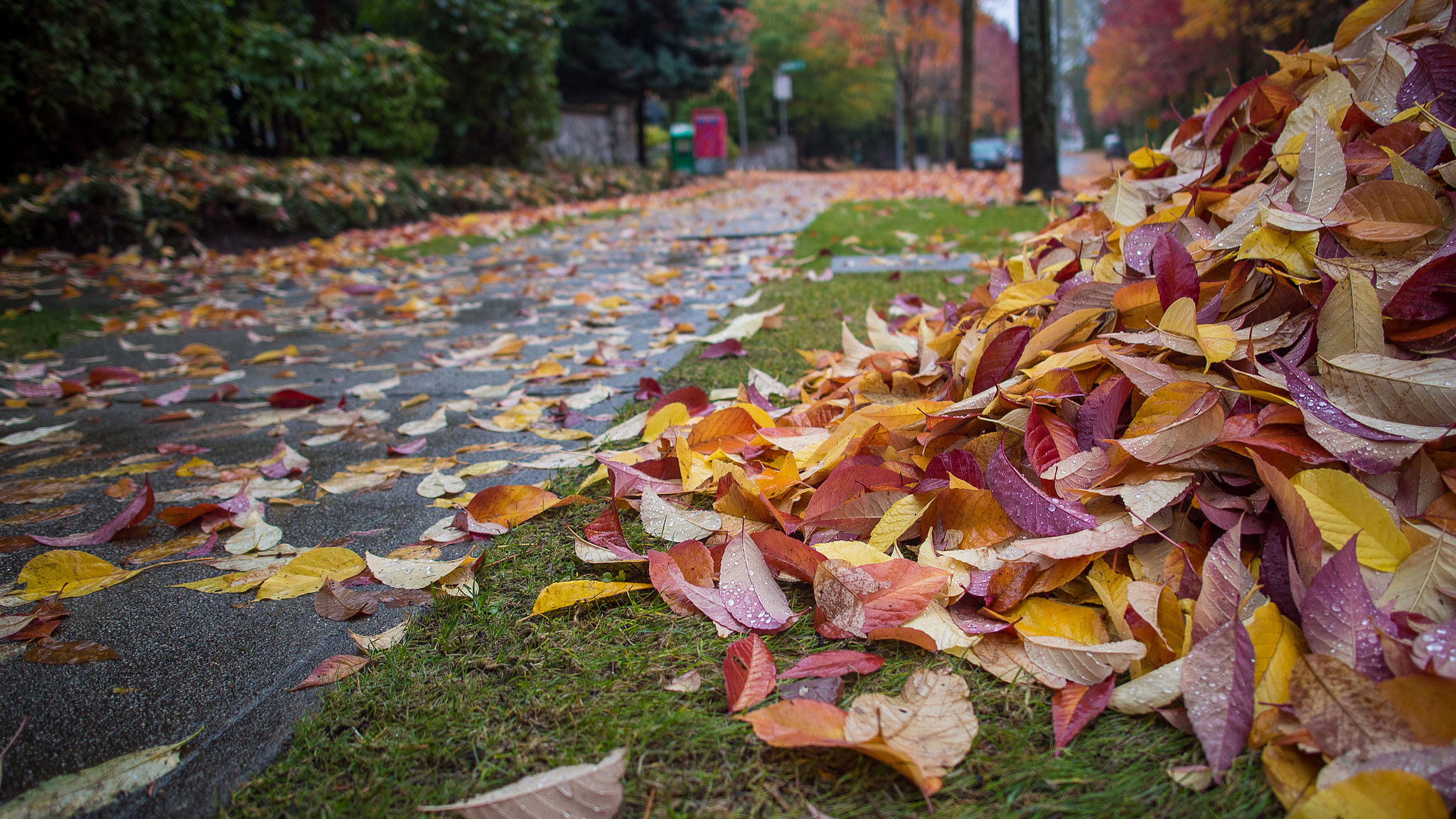
Fall leaves. Photo © Kenny Louie / Flickr through a Creative Commons license Many of us are raking our backyards right now, piling up leaves to be carried away or composted. Those leaf piles are fun to jump into, but they may also be harboring a nasty invasive worm.
Asian jumping worms churn through leaf litter in northern forests, altering biodiversity and soil chemistry. These worms live along the surface, in leaf litter, and lay their eggs there. Their cocoons are difficult to notice so they may end up in a leaf pile. When those leaf piles are bagged and transported away, the worm spreads.
What You Can Do: Adult Asian jumping worms are quite distinctive (see my previous blog for photos and video). The cocoons, though, are so tiny that they’re impossible to find. However, if you buy compost, make sure it has been heat treated to kill any pests.
-
Fishing Bait
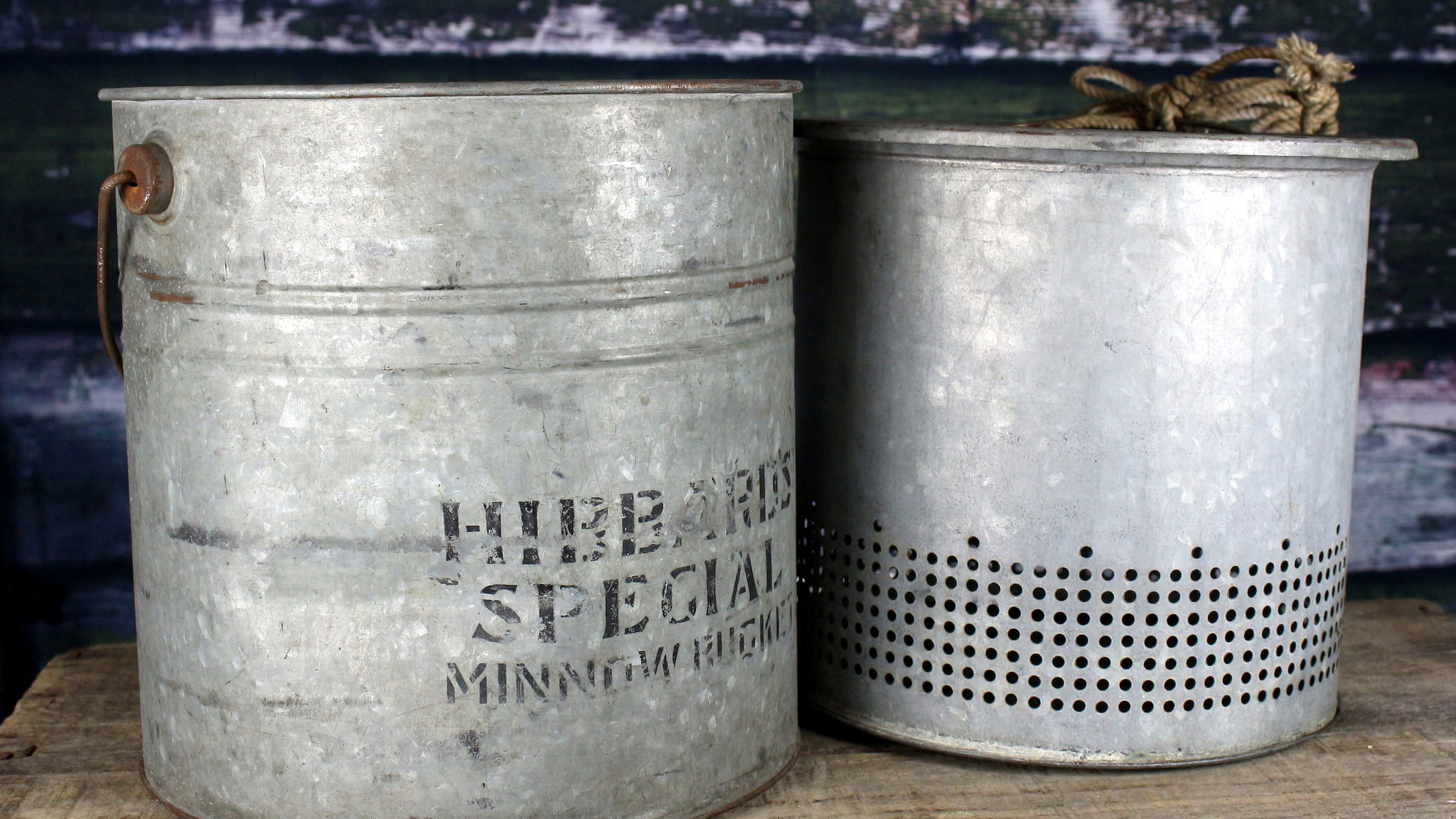
Vintage bait buckets. Photo © Cindy Shebley / Flickr through a Creative Commons license A fishing pole, a bobber and a worm: the archetypal image of a lazy summer day. But those worms are often non-native species. And it’s not just worms: many minnows and crayfish used for bait can also become invasive.
At the end of a fishing session, some anglers dump their bait into the water. Such an action could change their favorite fishing hole forever.
What You Can Do: Some states regulate the use of bait to native species, a wise policy. But whatever your state regulations, don’t dump your bait after you’re done fishing. Dispose of it away from water.
-
Truckloads of Pigs
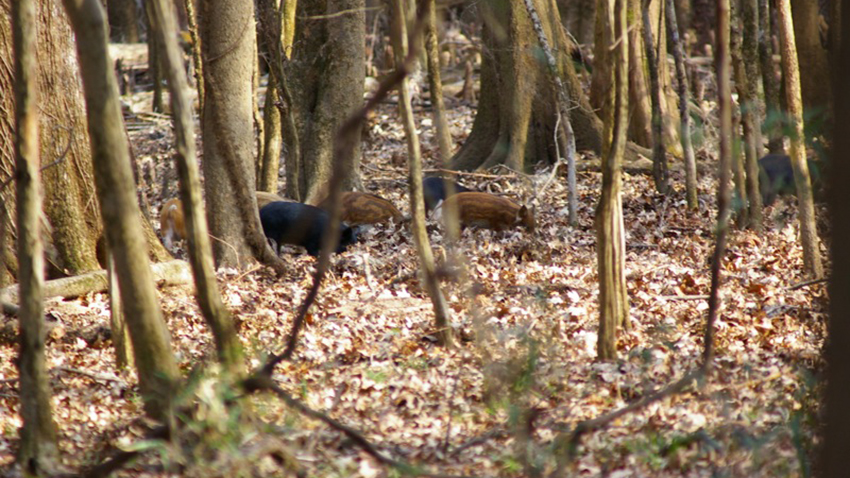
Feral pigs in Congaree National Park. Photo © Duane Burdick / Flickr through a Creative Commons license Feral hogs have made a dramatic spread over the past 25 years. Yes, they are tenacious and adaptable, but they haven’t spread into the Midwest, the Great Plains and parts of the Rockies on their own. They’ve had help – often from hunters who believe having pigs around would be a nice addition to the game list.
Numerous pig infestations have occurred when a local hunter and fenced hunt operator imports a truckload of feral pigs from another state. Hogs root up ground-nesting birds, native plants, mushrooms, reptiles and farms. Once established, they’re tough to stop.
What You Can Do: I suspect if you are loading up a truck with feral hogs, you’re not reading this blog. But all of us can report hog sightings. And hunters can clean up our act. Hunting shows and outdoor magazines often trumpet that hunters are the best line of defense against feral hogs. The truth is, hunters are the ones spreading them around. I’m a hunter. I’ve hunted hogs. But let’s be clear: hunters are causing this problem and it’s up to us to fix it.
-
Over-Abundant White-tailed Deer

The recovery of white-tailed deer populations is a stunning conservation success. But is it too successful? Photo © The Nature Conservancy (Matt Miller) Many ecologists consider white-tailed deer to be a bigger threat to the eastern forest than climate change. Deer clear the forest of undergrowth, leaving a lot of disturbed soil. Invasive plants thrive in disturbed soil.
White-tailed deer also don’t eat invasives, so it creates a cycle: the deer eat natives, creating space for non-native plants. The deer then focuses on the remaining native species, creating even more room for invasives.
What You Can Do: Unlike others on the list, this one may not seem like a direct human impact. But the over-abundant whitetail population is a direct result of human intervention. Hunters want more deer. Animal rightists don’t want to kill deer. This overprotection of the deer herd has many consequences, of which invasive plants are just one. All of us have a responsibility to advocate for community-based deer management and lower herd numbers.
-
Tourist Attractions
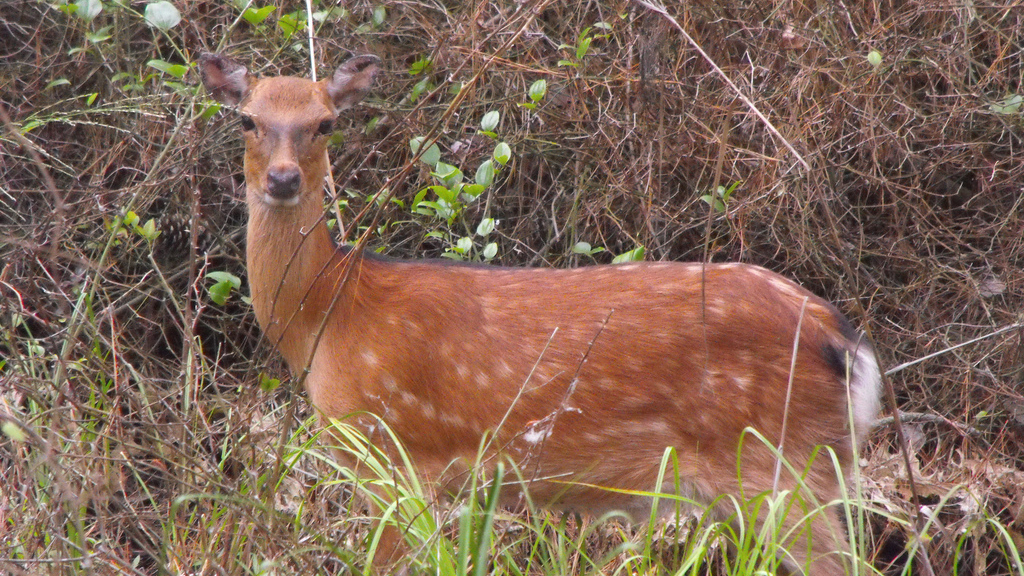
A sika deer at Chincoteague National Wildlife Refuge / Assateague Island National Seashore. Photo © Emma Kerr/USFWS In the early 1900s, a Maryland Boy Scout troop came up with a novel fundraising idea: They’d feature an exotic animal as a boardwalk attraction at nearby Ocean City. They chose sika deer, an Asian species that resembles a miniature elk.
They earned enough money to take a trip, but soon they found the novelty faded, and feeding expenses exceeded revenue. The troop took the sika deer to Assateague Island and released them. The animals still roam that island and surrounding areas.
What You Can Do: Presumably, you aren’t going to use exotic deer for your youth group fundraiser. But no matter what the circumstance – including unwanted pets – do not release animals into the wild. It probably won’t live a happy and free life as you imagine. And if it does, the results for society could be worse.
-
Shakespeare
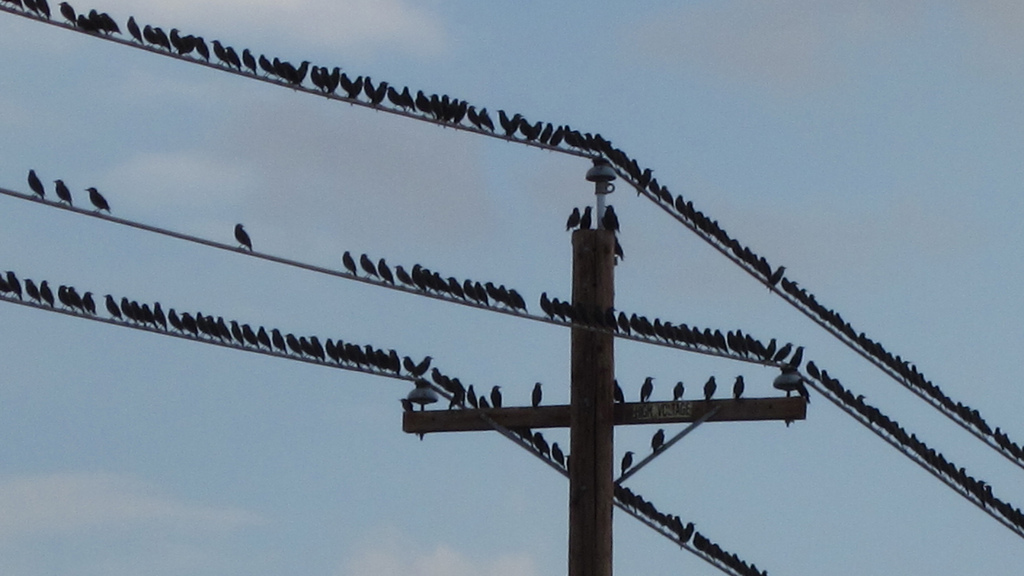
A multitude of European starlings in California. Photo © David Prasad / Flickr through a Creative Commons license It’s one of the most notorious of all invasive introductions. In the late 1800s, a group called the American Acclimatization Society undertook an ambitious if idiotic project: to introduce every bird mentioned in Shakespeare. All 600 of them.
Enterprising member Eugene Schieffelin chose the European starling as his personal project. True, the starling appears only once in Shakespeare, and not in one of his more famous works (Henry IV, Part 1). Nonetheless, Schieffelin was wildly successful in his introduction. So successful that starlings now swarm the North American continent.
What You Can Do: I’d like to think that species introductions like this are in the past. But it is dismaying just how many invasive introductions began with someone wondering, “Wouldn’t it be cool if we had [insert favorite species] here?” The correct answer: “No, it would not be cool at all, and future generations will hate you for it.” In our world of easy transport and global trade, invaders move around easily enough. Don’t add to it by intentional introductions.




Buy ALL plants at a native nursery in your county or region. Many plants sold at traditional plant retailers are non native and frequently invasive. Birds and pollinators spread the seeds and microorganisms outside of your yard, which may be very damaging to the environment.
Great article and photos. Removing invasive species is a top priority on our land and and constant battle. Replacing with natives is part of the answer. Thanks for spreading the word on what can be done.
Matt great article and maybe needs to be a required teaching piece for our schools. Keep up the good work.
It’s not deer overpopulation, It’s a cougar deficency.
Getting back to the trap, neuter, return of feral cats… To clarify, animal control is not releasing pets from shelters. These are feral animals. They were born wild, have never been pets, and have had extremely limited contact with humans. Cats are not as firmly domesticated as dogs, in part because we let so many of them roam outdoors, allowing them to make their own decisions about choosing mates and to hide and raise their babies without human intervention if they choose. They have kept more of their wild characteristics. This means it’s easy for completely wild populations to develop that exist alongside us without ever interacting with us, like raccoons and possums. These cats are EXTREMELY difficult to re-domesticate. They are afraid of humans and do not make happy pets. It is not kind to catch them and try to make house cats of them. But left alone, they kill a significant amount of wildlife, and because they are unvaccinated and un-neutered, they have very short lives, dying of disease and starvation when the population grows too large for the area food sources to support. Trap, neuter, return has developed as a strategy to gradually reduce the size of feral cat populations, while stopping the spread of disease and allowing the current population a humane quality of life. Feral cat communities are monitored by local volunteers, who remove kittens as soon as they find them, which are adopted through local animal shelters. Unlike the adults, young kittens can be successfully re-domesticated. Adults are trapped, neutered or spayed, vaccinated, and returned to the colony, often with an identifying ear marking so they are not accidentally trapped more than once. I know that returning these adults to their feral lives may sound frustrating to an animal lover or a wildlife lover, but it is one of the best solutions we’ve found. These animals can’t be re-domesticated, and trying to do so is extremely frightening and stressful for them. Think how a possum would feel if you trapped it, and tried to make a pet of it. Efforts to trap and humanely euthanize feral cats are met with dismay by local cat lovers, who are usually the people who keep an eye on the local feral population. Without the cooperation and support of these neighbors, it’s nearly impossible for animal control to find these cats. And if only some adult feral cats are euthanized, that means more food and lower disease burdens because of the smaller remaining population, so the remaining animals breed more successfully, and the population usually rebounds to its former size within a few months. You have to get them all to solve the problem, and you can’t get them all without the help of neighbors, and neighbors aren’t going to help you if they know you are killing the cats. Trap, neuter, return gets the support of local cat lovers, who monitor the colony and cooperate with the program. Vaccinations keep the existing cats healthier, and reduce the risk of diseases spreading to owned cats in the neighborhood or to wildlife. Neutering and removing kittens for adoption slowly decreases the size of the population as remaining “fixed” cats slowly die out. It’s the most effective, permanent solution we have. And for the cat and dog lovers out there, the reason we have this problem in the first place is that un-fixed pets are lost, are abandoned, or are allowed to roam. Spay or neuter your pets, don’t allow them to roam, and if you can’t care for them anymore take them to a shelter to find a new home. If you are looking for a pet, adopt one through a shelter instead of buying one from a breeder or pet store. You’ll be making room for the shelter to take in a new guest.
Lots of incorrect and misleading information Maggie.
TNR has never resulted in a reduction in the feral cat population – not in any city, county, or state. The method is not effective for population control.
Well-fed or not, sterilized or not, domestic cats are the leading direct anthropogenic cause of wild bird and small mammal mortality – to the the tune of billions every year.
TNR increases risks to public health. Just the fact that cats are the definitive host for the parasite that causes toxoplasmosis is reason enough never to support a method that warehouses cats outdoors in free-roaming colonies. The rabies vaccination is meaningless without subsequent booster shots. These cats do not receive regular veterinary care.
The food provided draws additional cats as well as rabies vector wild mammals like raccoons and skunks.
Not only are feral cats re-dumped into colonies but so are friendly, social cats through ‘community cat’ programs. Shelters also release cats through Shelter-Neuter-Return or Return-To-Field programs. And let us not forget about the misguided ‘need’ for cats to control rodents through ‘barn cat’ programs. One way or another the goal of TNR is to avoid euthanasia at any and all costs to wildlife, human health, property rights, and the cats themselves that often meet a tragic end.
There are many individuals and organizations that do not support this method for all of those reasons. We need to treat cats and we do dogs – licensed, prohibited from roaming, and permanently removed if stray or feral. TNR is simply hoarding outdoors and enabling abandonment to continue. By artificially sustaining cats in these colonies and not requiring owners to spay and neuter their pets, we are spreading an invasive species.
“If you see an unusual creature in something you bought, report it.”…….to whom?
You mentioned “fenced hunts”; that isn’t hunting, it’s murder.
You outdoorsmen call hunting a sport . In sports, both sides have a chance to win. If one side cannot shoot back, then it’s chances are severely limited. Sport my ass.
My sentiments exactly. “Sport my ass!”
i really liked your article abou weird ways of spreading invasive species. it was kind of unbelieveble and educational. please keep writing it.
The pythons in Florida are the descendants of an escapee (because Hurricane Andrew)-pet owners didn’t cause the problem.
Thank you for the clarification! According to the Florida Fish & Wildlife Conservation Commission it is likely both: http://myfwc.com/wildlifehabitats/nonnatives/reptiles/burmese-python/ “The actual mechanism of introduction is not known, however it is likely that Burmese pythons escaped from a breeding facility that was destroyed during Hurricane Andrew. It is also likely that pet pythons have been released in and around the Everglades.”
Movement of soil as fill is another vector that could be prevented. Roughly 40 years ago, my parents filled in a portion of our backyard adjacent to our house. The fill material apparently came from a floodplain infested with Japanese knotweed, which formed a dense colony resistant to repeated eradication attempts. Great story Matt; thanks for sharing these tips.
A couple of ironic things about the starling intro: One is that the first few tries at introduction failed, likely due to too few birds to form a breeding colony. The last try did it. The small group took off (so to speak…) The other irony is that European starlings are losing population, apparently because of the loss of habitat. Many of my British friends are mourning the absence of the large flocks they remember seeing as a child. I offer them some of ours, explaining how they got here. They can’t believe we really aren’t fond of the creatures, as they’ve displaced so many of ours. It’s a reminder that we humans are often foolish. A good way to avoid making these kinds of mistakes is to really understand how an ecosystem works. I love seeing kids outside, exploring where they live and developing that intimate relationship that will let them feel part of the natural world instead of trying to manipulate it. If only we could do something about lawns….
Thanks for CGS. It’s great. I’m a retired scientist and lifelong naturalist, and I love reading it because it takes me back to that time I was a kid and fell in love with dirt.
Very sound advice.
Why are starlings on your list?
May I suggest also the following for consideration (and I am including the risk of invasive plants as well as pests, pathogens as the ‘invasive threat’):
Movement outside the home location or habitat of vegetation for any horticultural or decorative purposes beyond the already mentioned firewood or leaf piles.
Examples include bark and chip mulch, pine needle hay, forest or wildflower foliage cuttings (I hate to even say it, but could non-local xmas trees be an issue?
If there is a project to introduce plants from elsewhere that are hopefully native and useful to the local wildlife, it could be better to source the seed and grow it on rather than source potted plants that may themselves be infected or carry infected soil or plant debris with them.
Also movement of plants from garden centres that are untested for their capacity to be invasive. Do we know if the latest trendy plant from your local garden centre is invasive to local habitats or is carrying a pest? Would the imported bonsai tree be a carrier of Asian long horn beetle. Would it be better to source local producers of ornamental trees if possible?
Purchase of non-local soils and bark in bulk bags or as part of potted plants from garden centres. Is it local origin soils and plants for local planting? Would bare root trees and shrubs be better?
Also Wood Packaging Material including wooden pallets, crates and dunnage is a concern internationally (and nationally for large countries ) for spreading pests and diseases. ISPM No 15 is a standard of manufacture of wood packaging material to reduce such pathways. It could be a good idea to ask your supplier of shipped goods if there is any wood packaging and if its to ISPM No 15 Standard. Bark-free wood packaging or processed wood packaging (eg plywood OSB), may be also a better option.
Also of concern could be quarry stone for road and path creation. Is the quarry stone from an area free from invasive plants that would deposit seed or reproductive material in the stone. Would the spreading of such infected material be a fast track corridor to spread of invasive plants outside the location of the infected quarry?
Hi Roderick: Excellent information. Thanks for commenting.
I’m surprised you didn’t include trap neuter release TNR of feral cats (& dogs as well to a lesser extent). This is happening all over America and seems to be the preferred method of dealing with unowned cats now. Animal control just releases them to do what they will to wildlife. The cornerstone of the no-kill movement is first to get the cats out of the shelters. There is no way to find homes for all the cats estimated in the tens of millions so they are just released to lower euthanasia rates. The impact on wildlife, human health, neighborhood cleanliness and the cats’ own welfare are ignored.
Hi Denise: Yes, trap-neuter-release is a major problem and would be a good subject for a future blog post. There is a new book, Cat Wars by Peter Marra and Chris Santella, about the ecological devastation wrought be feral and free-roaming cats. Look for a review here in the future.